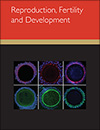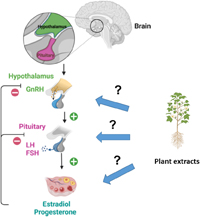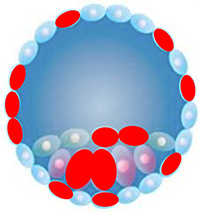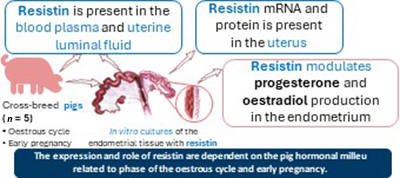Reproduction, Fertility and Development
Volume 37
Number 3 2025
Plant extracts can be an alternative to treat some female infertility. Female fertility is a complex process regulated by hypothalamic–pituitary-ovarian unit involving both negative and positive feedback mechanisms. Because this hypothalamo–pituitary-ovarian axis is crucial in the regulation of female fertility, this review highlights mechanisms of action of various plant extracts on this axis. Diagram by J. Dupont using BioRender software.
This article belongs to the collection: The biology of the ovary – Honouring the contributions of Ken P McNatty and Rex J Scaramuzzi.
In this review, we explore the limitations on current genetic testing methods for embryos used in assisted reproductive technologies. We highlight the need for new solutions to address these clinical and technological challenges. Furthermore, we discuss a promising approach, metabolic imaging, which could potentially meet these clinical needs and improve the current issues faced by genetic testing for embryo selection. Image by Fabrizzio Horta.
This article belongs to the collection: Frontiers in Reproduction Science – Rising Stars at the Society for Reproductive Biology 2023.
Resistin belongs to adipokines – the group of hormones secreted mainly by the adipose tissue that can regulate not only energy homeostasis but also reproductive functions. We determined the presence of resistin in the uterus and its impact on the uterine steroidogenesis of pigs, an important farm animal. The obtained results suggest that resistin may interconnect metabolism and reproduction, and in the long-term perspective, these results may help improve farm animal breeding efficiency. Image by the authors








